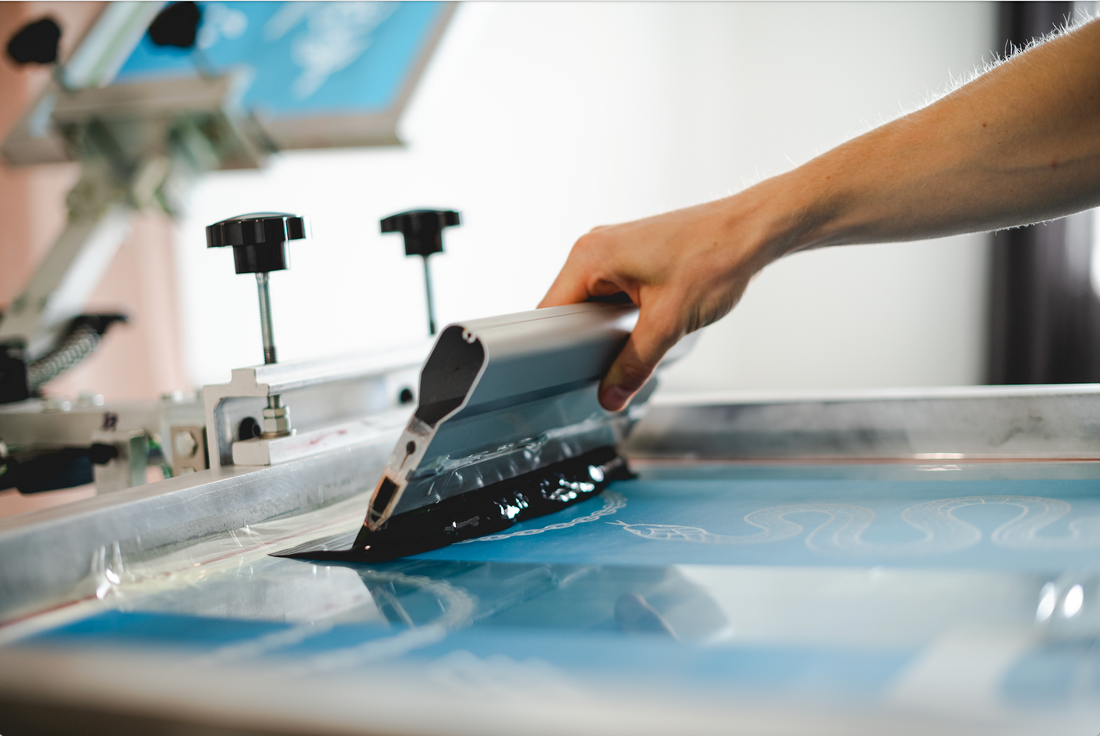Introduction to Screen Printing
Screen printing is a versatile and popular printing method that has been around for centuries. It involves using a stencil to transfer ink onto a substrate, such as fabric, paper, or plastic. With a wide range of applications, from custom t-shirts to posters, screen printing is an essential skill for many designers and artists. In this article, we'll explore seven essential screen printing techniques for beginners to help you get started.

The Importance of Choosing the Right Equipment
Before you dive into the world of screen printing, it's crucial to invest in the proper equipment. High-quality tools will not only make your job easier but also ensure better results. Here are some of the most important pieces of equipment to consider:
Types of Screen Printing Machines
There are several types of screen printing machines available, ranging from manual to automatic models. As a beginner, you might want to start with a manual press, which is more affordable and easier to operate. As you gain experience, you can upgrade to a semi-automatic or fully automatic machine, which offers more precision and speed.

Preparing Your Design
Once you have your equipment, it's time to prepare your design. This involves creating a stencil and choosing the right ink for your project.
Creating a Stencil
A stencil, also known as a screen, is the heart of the screen printing process. It is made by applying a photosensitive emulsion to a mesh screen and then exposing it to light. This process hardens the emulsion in the exposed areas, leaving behind a negative of your design. When ink is applied to the screen, it passes through the open areas of the mesh, transferring your design onto the substrate.
Choosing the Right Ink
Ink choice is another essential aspect of screen printing. The type of ink you choose will depend on the material you're printing on and the desired outcome. There are water-based inks, plastisol inks, and specialty inks designed for specific applications, such as metallic or glow-in-the-dark effects.

Screen Printing Techniques
Now that you're familiar with the basics of screen printing, let's explore seven essential techniques that every beginner should know.
1. Flat Bed Printing
Flat bed printing is the most basic and versatile form of screen printing. In this technique, the substrate is laid flat on a table, and the screen is placed on top. The ink is then applied and pulled across the screen using a squeegee, transferring the design onto the substrate. This method is ideal for printing on a variety of materials and can be done manually or with an automatic press.
2. Rotary Screen Printing
Rotary screen printing, also known as cylinder screen printing, involves using a cylindrical screen that rotates around the substrate. The ink is applied to the inside of the screen and transferred onto the substrate as the cylinder rotates. This technique allows for continuous printing and is well-suited for high-volume production runs, particularly in the textile industry.
3. Four-Color Process Printing
Four-color process printing, also known as CMYK printing, is a technique that uses four ink colors (cyan, magenta, yellow, and black) to reproduce a full-color image. By combining these four colors in varying amounts, a wide range of colors can be created. This method is ideal for printing complex, multi-colored designs and is commonly used for posters and art prints.
4. Discharge Printing
Discharge printing is a unique technique that involves removing the dye from the substrate, rather than adding ink on top. A discharge agent is mixed with the ink and applied to the fabric. When heated, the discharge agent removes the original dye, leaving behind the ink color. This method results in a soft, breathable print that is ideal for printing on dark-colored fabrics.
5. Heat Transfer Printing
Heat transfer printing, also known as iron-on printing, involves printing your design onto a special heat-sensitive transfer paper. The printed design is then placed face-down onto the substrate and heat is applied, causing the ink to transfer onto the material. This technique is popular for DIY projects and is suitable for both fabric and non-fabric substrates.
6. Digital (DTG) Printing
Digital printing, or direct-to-garment (DTG) printing, is a relatively new technology that involves printing your design directly onto the substrate using an inkjet printer. This method offers high-resolution, full-color prints with minimal setup time, making it ideal for small runs and one-off projects. However, it can be more expensive than traditional screen printing methods, particularly for larger orders.

7. Sublimation Printing
Sublimation printing is a technique that uses heat to transfer dye onto a substrate, typically polyester or other synthetic materials. The design is first printed onto special sublimation paper, which is then placed onto the substrate and heated. The heat causes the ink to turn into a gas and penetrate the fibers of the material, creating a permanent, vibrant print. This method is popular for printing on sportswear, promotional items, and other synthetic materials.
Conclusion
Screen printing is a versatile and rewarding skill that offers endless creative possibilities. By familiarizing yourself with these seven essential techniques, you'll be well on your way to mastering the art of screen printing. Whether you're a hobbyist or a professional, there's always something new to learn in this ever-evolving field.
Frequently Asked Questions
1. What is the best screen printing technique for beginners?
Flat bed printing is the most beginner-friendly technique, as it is relatively simple and can be done manually or with an automatic press.
2. Can I screen print at home?
Yes, with the right equipment and a bit of practice, you can screen print at home. Start with a small, manual press and work your way up as you gain experience.
3. How do I choose the right ink for my project?
Consider the type of substrate you're printing on and the desired outcome. Water-based inks are more environmentally friendly and work well on most materials, while plastisol inks are more durable and better for long-lasting prints.
4. Can I screen print on any material?
While screen printing is versatile, not all materials are suitable for this process. It works best on porous substrates, such as fabric, paper, and some plastics. Always test your materials beforehand to ensure compatibility.
5. How can I ensure my prints last longer?
To ensure the longevity of your screen prints, choose the appropriate ink and curing method for your substrate, and follow proper care instructions, such as washing garments inside out and avoiding high heat when ironing or drying.
Equipment
Unveiling the Best Screen Printing Machines for Beginners: Your Ultimate Guide
How to Choose the Right Screen Printing Press for Your Business: A Comprehensive Guide
The Ultimate Screen Printing Kit Buying Guide
Ink
A Beginner's Guide to Screen Printing Inks
Why Water-Based Screen Printing Ink is the Future
The Benefits of Using Discharge Screen Printing Ink
Screen
How to Choose the Right Screen Printing Mesh for Your Project
Everything You Need to Know About Screen Printing Frames
The Ultimate Guide to Screen Printing Emulsion
Technique
7 Essential Screen Printing Techniques for Beginners
How to Screen Print on Fabric: A Beginner's Guide
The Basics of Screen Printing on Paper
Service
Get Custom Screen Printing for Your Business or Event
Find Screen Printing Services Near You
The Best Online Screen Printing Services for Your Business
Supplies
The Essential Screen Printing Supplies You Need

